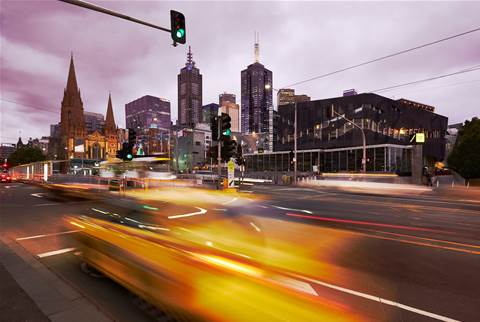A new project out of the University of Melbourne is aiming to use AI to predict traffic congestion up to three hours ahead, in order to optimise traffic in large cities.
The University’s Integrated Multimodal EcoSystem (AIMES) brought together Melbourne headquartered AI transport solutions vendor PeakHour Urban Technologies, Telstra, and the Victorian Department of Transport to create a large-scale AI application that can predict traffic across Melbourne.
Telstra's 5G network will be used in the deployment of the technology.
Transport engineering expert and AIMES Director Professor Majid Sarvi said the application can also optimise traffic signals for on-road vehicles, freight, and public transport such as buses and trams.
“The application observes the nature of traffic and figures out complex traffic patterns across the network through machine learning built into the technology,” Professor Sarvi said.
“If we can upscale the application to provide more accurate prediction with machine learning and real-time data, it will soon be possible to substantially reduce delays in hotspots across Melbourne and many locations across the globe.”
PeakHour Urban developed the application’s AI core engine which runs on AWS and powers the engine’s predictive capabilities.
AWS is able to provide the scalability to ingest, store, and process large amounts of traffic data.
“Pioneering AI in forecasting real-time traffic lies at the heart of this effort. We are using a multidisciplinary approach, combining deep knowledge of mobility with vast amounts of real-time data analytics to predict and optimise traffic in large cities,” PeakHour Urban Technologies founding CEO Omid Ejtemai said.
The Victorian Department of Transport provided traffic data and insight.
Victorian Minister for Transport Ben Carroll said managing a complex transport network presents many real-time challenges.
“Not only does this world first technology help Victorians navigate congestion by predicting traffic patterns hours in advance, but it paves the way to the future of connected and autonomous vehicles,” Minister Carroll said.





_(11).jpg&h=142&w=230&c=1&s=1)




.jpg&w=100&c=1&s=0)
_(8).jpg&w=100&c=1&s=0)







.jpg&q=95&h=298&w=480&c=1&s=1)





